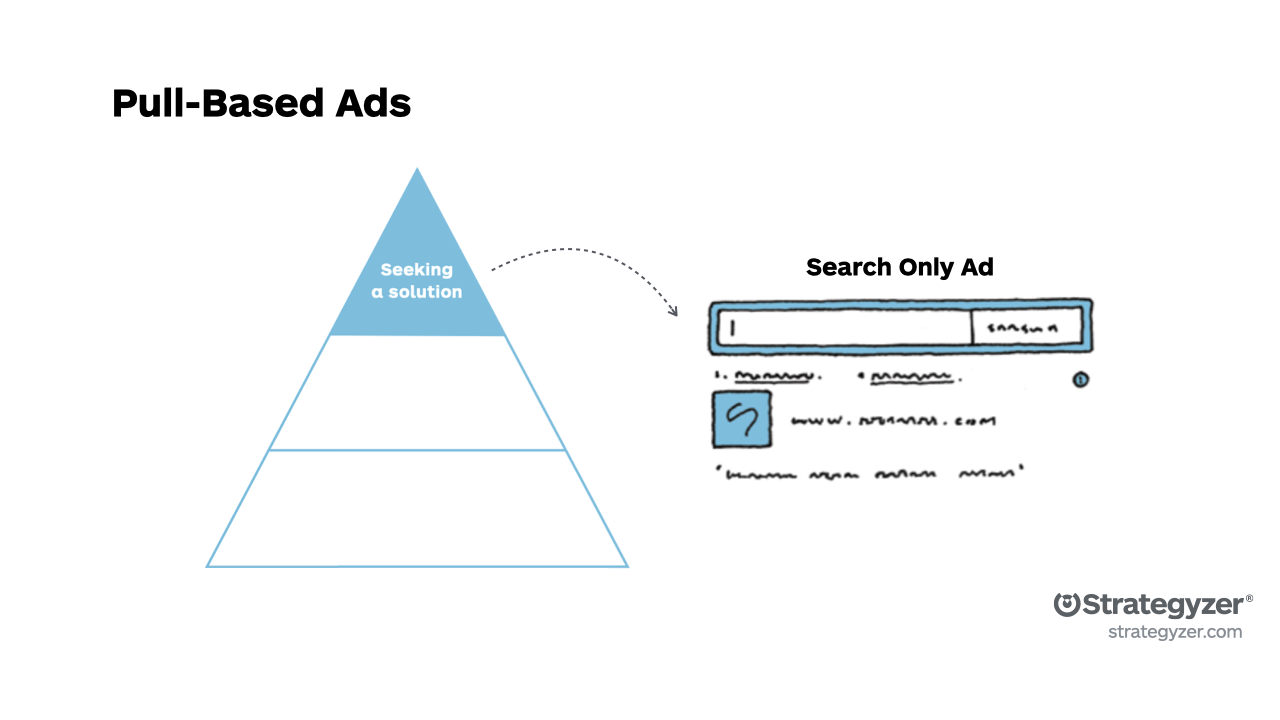In this blog post, we provide an Online Advertisement template that clearly articulates a value proposition for a targeted customer segment with a simple call to action.
You can learn about templates and more by signing up for our master workshop on Testing Business Ideas.
The Value Proposition Canvas is a valuable tool to map out whether you have a problem-solution. At this stage, you have already collected enough evidence to determine that customers care about certain jobs, pains, and gains. You've proved the existence of a problem and have designed a value proposition that addresses your customers' jobs, pains, and gains. Ie, you have a problem-solution fit at the design stage. However, you still do not have clear evidence that your customer really cares enough about your value proposition to buy it, thus you need to test your design. This is where the online ad can help you test it.

Finding your target customers online
The first step is to find your target customers online. One of the exercises I recommend is simply asking your team to write down their answers to a few simple questions about the customer location:
- “Which websites do they visit frequently?”
- “What apps do they use?”
- “Where would they hang out online?”
Once the team has written down the answers to these questions, then we narrow down on 1-3 online locations to start testing. You can have the team dot vote on where they’d spend their time and money to reach this customer online. After you’ve made this decision, you can determine if an online push or pull-based approach is appropriate.

Acquiring customers with online ads using push or pull
The next challenge with reaching your customers online is to determine the correct approach. Here we can build upon Steve Blank’s work on the characteristics of Earlyvangelists.
According to Blank, Earlyvangelists are early adopters who are “willing to take a risk on your startup’s product or service because they can actually envision its potential to solve a critical and immediate problem—and they have the budget to purchase it”. These are the people you would want to initially test with till you can prove a problem-solution fit.
Some characteristics for an Earlyvangelist are: (1) they have a problem, (2) is aware of the problem, (3) has been actively seeking a solution. Use the work on your Customer Profile to determine whether you believe your customer is aware of the problem or already actively seeking a solution. This is something you can already validate when testing your customer profile.

The “Push” approach to Online Ads
With customers who have the problem and are aware of it, you can use a push-based approach to getting them into your experiments. This is if you are trying to build awareness and have potential customers click an ad. This means we’ll use display advertising to target customers based on criteria such as age, demographics, location, etc.

The “Pull” approach to Online Ads
In contrast to the push-based acquisition, you can take a slightly different approach for those already seeking a solution to the problem. You will need to get in front of them when they are seeking it. The goal is to catch potential customers when they are online actively seeking a solution. This means we’ll serve up our ad as a result of a search result page. You’ll see these quite often when you search on Google, as they have the “Ad” superscript in bold at the beginning of the text.

Connecting your Value Proposition Canvas to online ad using templates
Now that you’ve determined a “push” or “pull” based approach, next you’ll want to include elements from your Value Proposition Canvas into your ad design and copy. Not doing this is a common mistake we see in teams trying to determine problem-solution fit. They forget about all of the hard work put into their VPC and just recreate these from scratch. At the end of the day, this is an experiment to determine whether the assumptions you’ve mapped out on your canvas is correct.
As you can see in both templates, we use the Value Proposition Canvas as a foundation. You can pull in your value proposition to inform your clickable headlines, value statements, and imagery. Your canvases are a gold mine of information, don’t forget to use them!






